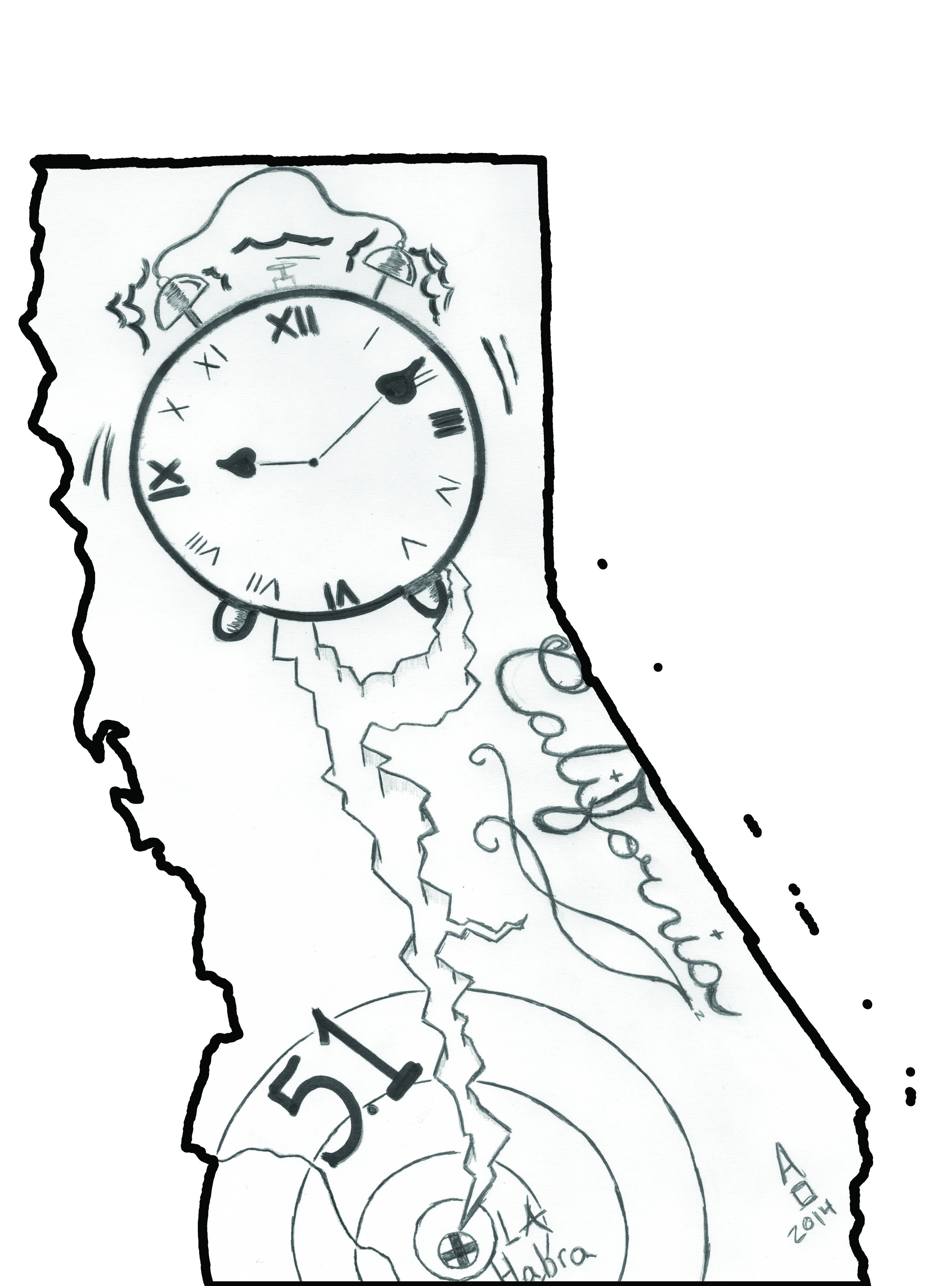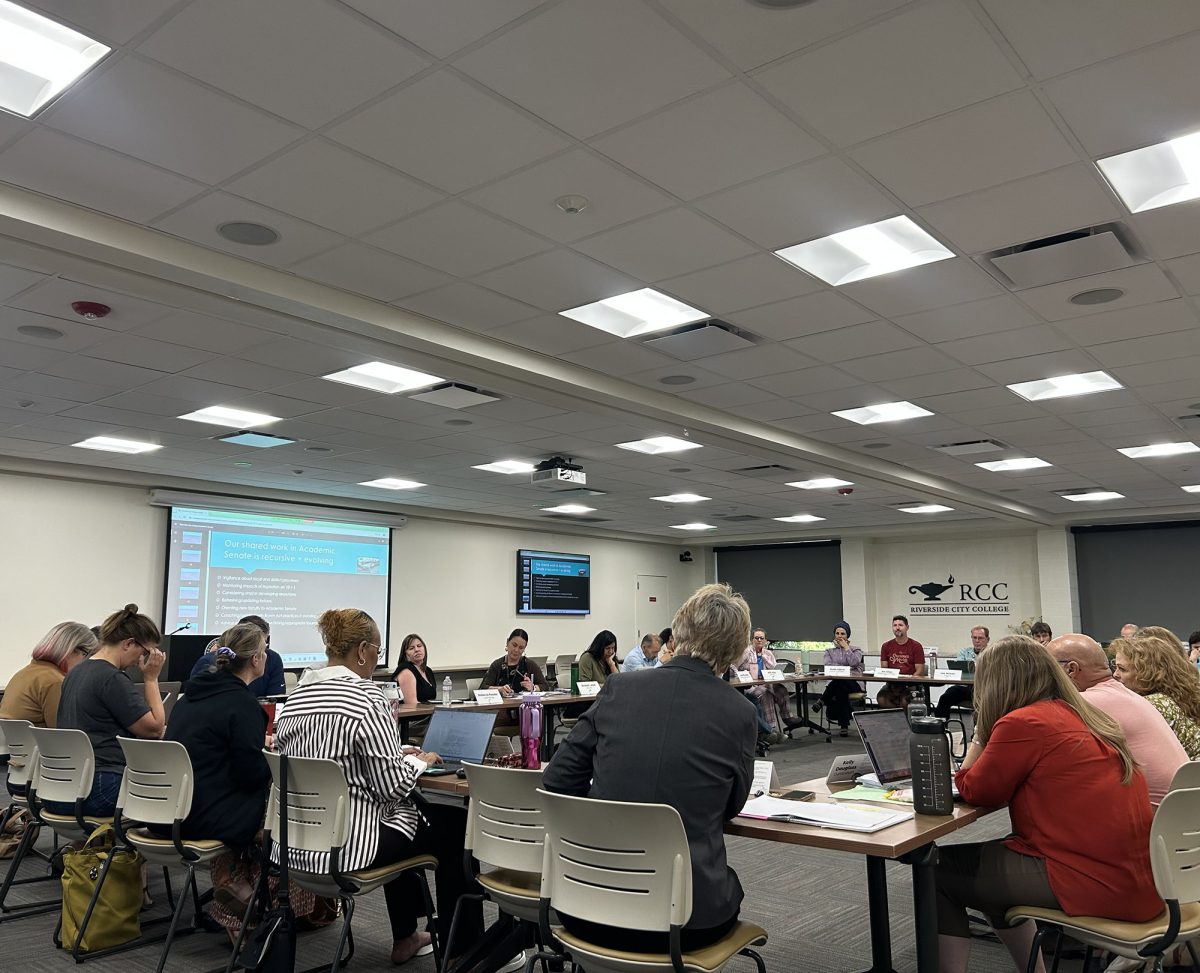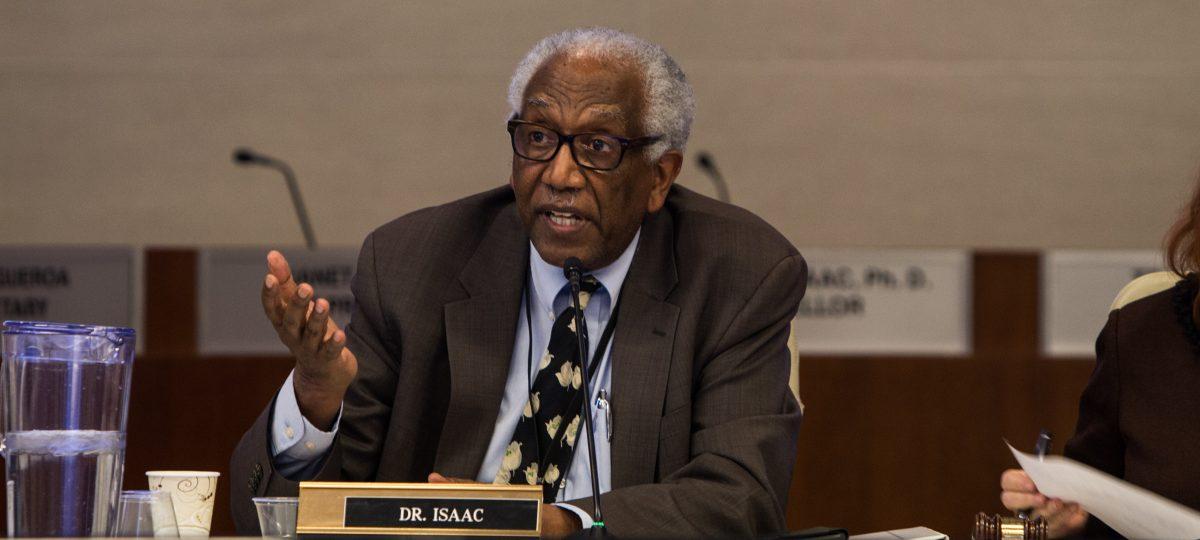TYLER REESE | STAFF WRITER

Evenings are spent relaxing from a hard days work: not cowering under a table or desk while an earthquake rattles the world around you. The recent Californian, Chilean and Panamanian quakes the ring of fire produced brought people to this level of fear in their homes.
The United States Geological Survey’s experts don’t believe the series of quakes that occurred recently are related to one another, but many agree that the major incidents in both North and South America share at least one common factor. Each tremor and their frequent aftershocks were located along the circum-pacific seismic belt (connected fault lines surrounding the Pacific Ocean), aka “The Ring of Fire.” scientists with the USGS say 90 percent of the world’s earthquakes occur along this belt.
The Puente Hills thrust fault produced the 5.1 tremors March 28 and stretches from northern Orange County to downtown Los Angeles and into Hollywood. The quake was followed by more than 150 aftershocks.
“It felt like a normal California earthquake to me: nothing unusual about it,” said Anthony Ortiz, an RCC student.
“I fear that we are due for a big earthquake soon because we haven’t had one in years and when it does happen it could possibly kill thousands,” said Jazmine Flores, an RCC student.
According to ABC7, the USGS estimates that the shaking from a 7.5 quake in urban Los Angeles along the Puente Hills fault, like what happened in Loma Prieta 1989, could kill 3,000 to 18,000 people and could cause up to $250 billion in damage.
“I think earthquakes can be a hazard to society because of the damage they cause,” Ortiz said.
The potential damage is because the fault runs under so many old buildings in downtown Los Angeles and Hollywood.
The same thrust fault in Puente Hills was also responsible for the Whittier Narrows earthquake in 1987, which was a magnitude 5.9 that killed eight people and did more the $350 million in damage.
“Earthquakes are a hazard to California, especially when the magnitude of the quake is strong enough to make everything fall apart,” said John Bulong, an RCC student.
The earthquake in northern Chile on April 1, which was an 8.2, occurred as the result of the thrust fault at a shallow depth near the Chilean coast. The tremor was foreshadowed by a 4.3 tremor just hours before the main quake and then followed by 68 aftershocks, all registering above a magnitude 4.0 to 6.2 on the Richter scale.
The locations of the earthquakes are even with the Nazca and South America plates. The Nazca plate subducts beneath the South America plate and subduction along the Peru-Chile Trench in the Pacific Ocean of the coast of Chile has led to uplift of the Andes mountain range.
This subduction zone has produced some of the largest earthquakes in the world, including the 2010 magnitude 8.8 Maule earthquake in central Chile, and the largest earthquake on record, the 1960 magnitude 9.5 earthquake in southern Chile according to the USGS website.
Panama experienced a 5.8 earthquake 37 miles off its coast April 2 the day after an 8.2 earthquake shook Chile. No reports of damage or injuries were immediately reported and no tsunami warnings were issued according Elizabeth Chuck of NBC News.
According the USGS the earthquake Panama experienced was a separate event and not an aftershock as a result from Chiles earthquake.
“Panama’s head of emergency services, Arturo Alvarado, said there were no reports of damage, but that schools and homes in the area were evacuated as a precaution,” Chuck said. “Some citizens reported light and moderate shaking to the USGS.”
The magnitude 5.1 quake near Los Angeles on March 28 may be thousands of miles away from the epicenters in Chile and Panama, but their positions on the Ring of Fire put them into an a special category of quakes that include the one that shook Japan in 2011.
The same quake caused the major tsunami that contributed to the meltdown of the Fukushima nuclear plant which is responsible for roughly 16,000 deaths according to Real Times question more website.






